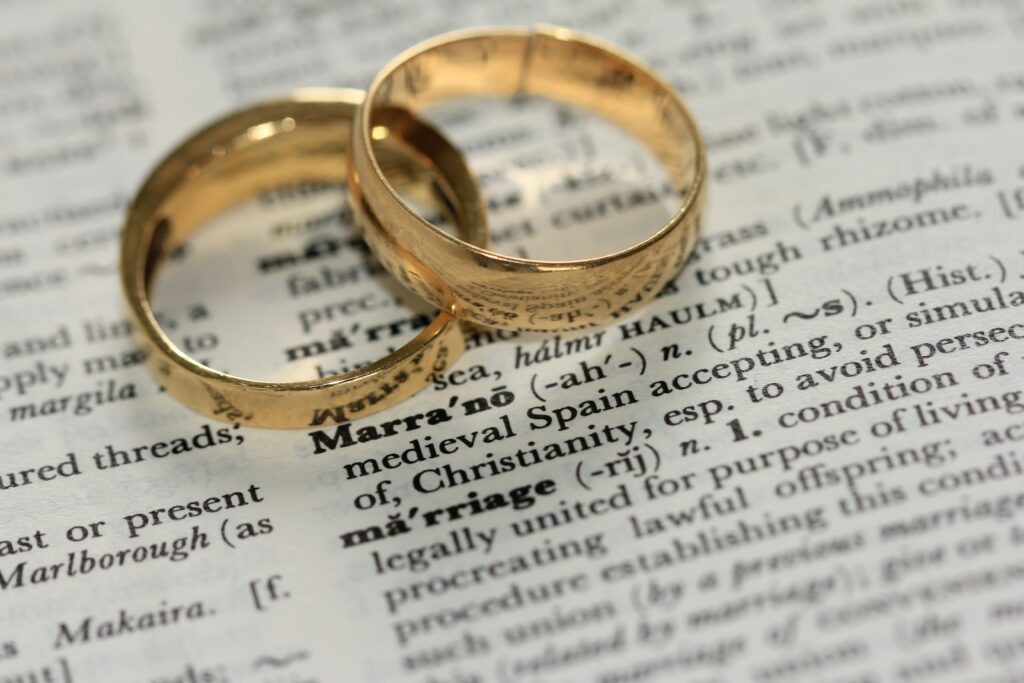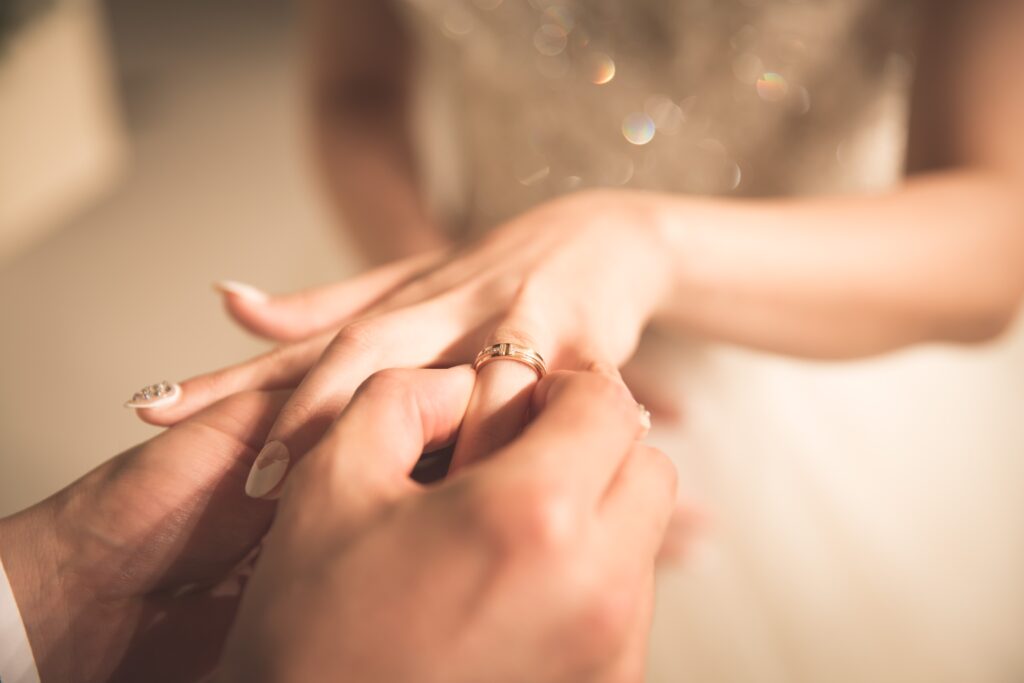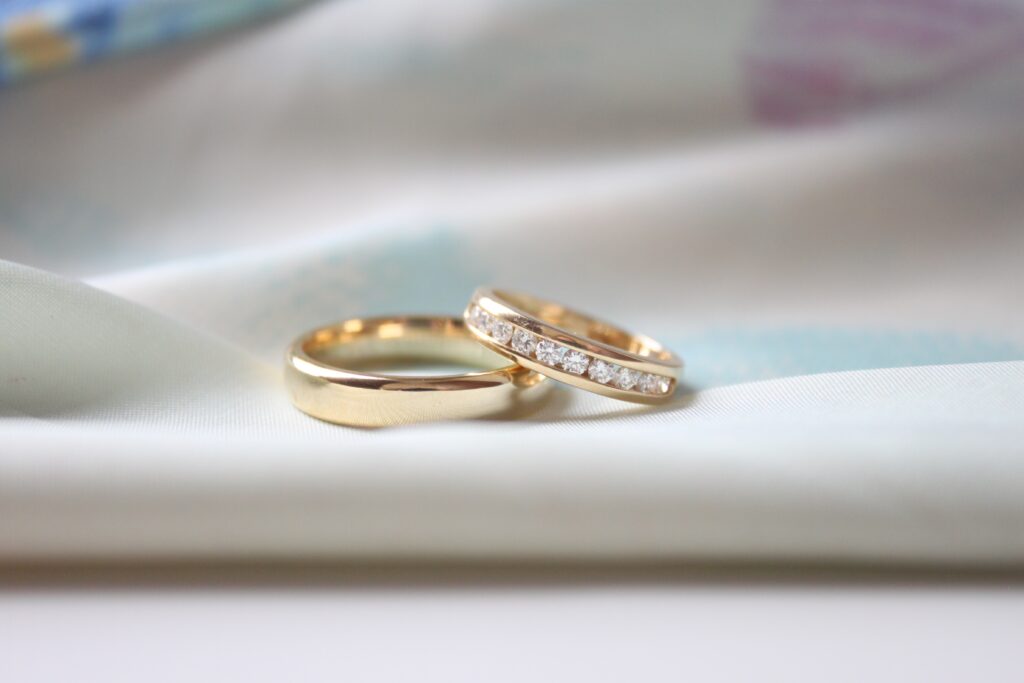Photo by Sandy Millar on Unsplash
Wedding rings have been worn by brides and grooms across the world for centuries. They come in a variety of styles and finishes, and of course symbolize marriage. But have you ever questioned what they mean beyond the obvious, and what their origins might be?
We delve into a brief history of the wedding ring, as well as some of the more unusual traditions involved.
A brief history of Western wedding bands
A wedding ring is more than just a piece of jewelry. It is a symbol of love and commitment between two people. While there are countless styles and designs of wedding rings available today, the tradition of exchanging rings during a wedding ceremony goes back thousands of years.
The earliest recorded history of wedding rings dates back to ancient Egyptian times, where they believed that the circular shape of the ring symbolized eternity, with no beginning or end. The ring was placed on the fourth finger, now known as the ring finger, because it was believed that a vein in this finger, the ‘vena amoris’, ran directly to the heart, symbolizing the love and commitment between the couple. This tradition was adopted by the Greeks and Romans and eventually spread throughout the world.
Photo by Jeongim Kwon on Unsplash
Back in the days of the ancient Romans, wedding rings were provided as part of the traditional dowry. They soon came to symbolize fidelity in marriage. Per European Christian culture, wedding rings also became an important part of the wedding ceremony during the Middle Ages.
Up until recently, materials for rings (particularly diamonds) were sourced from just about anywhere. Modern rings have a much stronger focus on ethics as well as showcasing age-old traditions.
16th and 17th century gimmel rings
Gimmel rings were made up of two separate bands that were interlocking. These would be worn separately by brides and grooms during their engagement. After the wedding, the wife got to wear both rings together. Over time, the styles and materials of wedding rings have evolved to reflect changing societal norms and personal preferences.
Renaissance poesy rings
A particularly lovely tradition, poesy or posy rings were popular during the Renaissance period in the West. These sterling silver bands were inscribed with little poems or messages of love. They offered an extra touch of romance with meaningful words for brides and grooms. Poesy rings would be a great thing to revive with a custom-engraved engagement ring in modern times.
Middle Eastern puzzle rings
Middle Eastern puzzle rings were a clever invention. These rings were made up of several pieces or bands that became one joined-up band when put together correctly. The idea was that the ring would be very difficult to put on by oneself. The less romantic idea behind these was that an unfaithful partner would be caught out by their inability to re-assemble their wedding ring.
Photo by Paige Johnson on Unsplash
Promise rings and beyond
Posy rings above were the original promise rings dating back to the 16th century. They were a sign of commitment to one another before the couple married. A similar custom is the more contemporary Irish claddagh ring, which symbolizes love, friendship, and fidelity. These have been popular since the mid-1900s and beyond, and are frequently passed on as a family heirloom.
Traditional or modern, that is the question
Today, wedding rings continue to hold a significant place in modern wedding ceremonies. Couples may incorporate their cultural or religious traditions into their ring exchange, or choose to create their unique wedding ring designs that reflect their personal style and values.
Perhaps you’re just interested in the history of wedding rings, perhaps you’re looking for a tradition that resonates with you. Whatever the case, there are many beautiful and interesting traditions to look into when it comes to wedding jewelry. Why not craft your own modern piece inscribed with poetry, reminiscent of poesy rings? Or offer a vintage promise ring followed by a modern, timeless piece. Whichever you choose, make sure you complement it with some gorgeous nails.



